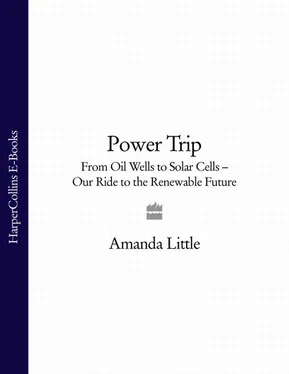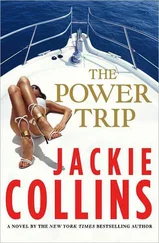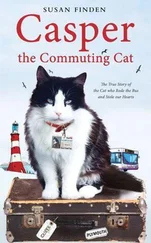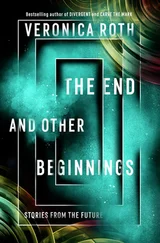For most of us, however, America’s energy landscape still feels like distant and impersonal terrain. We wonder how those grand threats and promises will translate into action. Very little reporting tells America’s energy story in human terms. Very little paints America’s love affair with energy in broad strokes—portraying our roles as a global energy consumer, polluter and innovator. Books on energy tend to be dense and technical; they often examine the economic, scientific, and political aspects of energy, but they rarely explain what these changes mean in our lives in the most practical, personal sense. They complain about the mess we’re in, but few explain how we got ourselves here and, in simple terms, how we can climb our way out.
The father of a friend of mine, who is now a successful businessman, defined his approach to problem solving in terms he learned through a painful experience as a boy growing up on a farm in Ohio. When a cow gets stuck in a ditch, first you have to get the cow out of the ditch. Second, you have to figure out how the cow got into the ditch. Third, you have to figure out how to stop the cow from getting into the ditch in the future.
I want, like a majority of citizens of the industrialized world, to get myself out of the ditch of fossil fuel dependence. But to do it right, I—and we—need to understand the roots of the problem, to understand how, during the twentieth century, fossil fuels became so thoroughly woven into the fabric of our lives. We need to recognize what our options are going forward—how America as a whole could build an actual, factual “green” future, free from fossil fuels, changing the way people live not only at home, but worldwide.
This book searches America’s past for clues to understand our global future. It tracks the meteoric growth of our superpower thanks to fossil fuels. It describes how cheap fuel and electricity built our sprawling cities, unequalled military might, and major industries—from automobiles and agriculture to plastics and computing—and seeped into the fibers of our daily lives. It examines how the oil and coal that built us up now threaten our ruin, tainted as they are with political strife and corruption, and pollutants that kindle environmental chaos. It also looks forward—to the transfusion of clean and renewable power sources that are beginning to course through the copper veins and combustion-engine heart of our nation.
The story of America is, in sum, the story of a power trip; to understand it, I had to go on my own. In January 2007, I set out to explore the most extreme frontiers of our energy landscape—from its deepest wells to its tallest towers. I wanted to pull at the threads of connection between fossil fuels and everyday American life and see what places they led me to, however strange or unexpected. They led me, as it turned out, to some very strange spots, from deep-sea oil rigs to Kansas cornfields, NASCAR tracks to high-priced plastic surgeons, dank city manholes to Texas wind farms, Pentagon offices to my local produce aisle.
I saw places where the old energy system is flaming out and the new system—smart, efficient, whisper-quiet, and high-performance—is sparking to life. I interviewed architects of the oil-guzzling twentieth-century economy—great and innovative in their own right—and pioneers of tomorrow’s new machine.
My goal as I describe this journey is not to cast judgment on what has gone wrong in America’s energy landscape—as I have said, I’m guilty myself of buying into and even relishing it. Instead, I want simply to understand this landscape, and to celebrate its successes for all their unintended consequences. It was, after all, American ingenuity that led us down the path of fossil fuel dependence. So I set out to discover how that same ingenuity can change our future course. The following pages are a chronicle of both journeys through the fast-changing energy frontier—America’s, and my own.
One
LIFE, LIBERTY, AND THE PURSUIT OF OIL
The Story of the American Century
Конец ознакомительного фрагмента.
Текст предоставлен ООО «ЛитРес».
Прочитайте эту книгу целиком, купив полную легальную версию на ЛитРес.
Безопасно оплатить книгу можно банковской картой Visa, MasterCard, Maestro, со счета мобильного телефона, с платежного терминала, в салоне МТС или Связной, через PayPal, WebMoney, Яндекс.Деньги, QIWI Кошелек, бонусными картами или другим удобным Вам способом.












